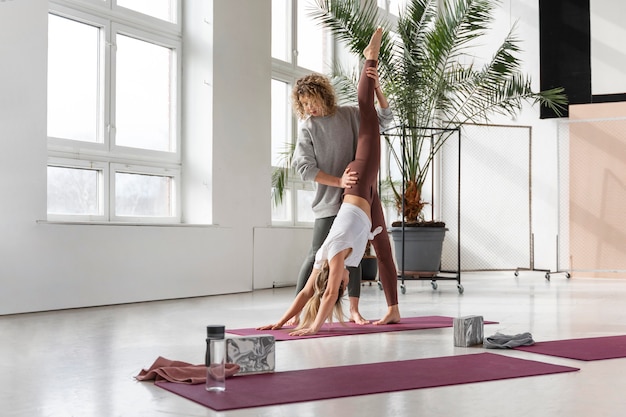
A yoga body isn’t just about flexibility; the ancient practice can boost your memory, heart, and bone health, according to Anna Magee.
Yoga is becoming extremely popular in the UK, with people spending £790 million a year on classes and mats. While new and quirky types of yoga, like rage or naked yoga, paddle-board yoga, and even dog yoga, are popping up, the real health benefits of traditional yoga are being backed by science.
Research from UCLA shows that a three-month course of yoga and meditation was more effective than memory exercises in reducing age-related brain decline. Another study found yoga improved sleep for breast cancer survivors.
Lucy Edge, a 53-year-old former advertising executive, turned to yoga instead of anti-depressants during a period of deep depression. After a six-month break to study yoga in India, she returned not only content but also inspired to share its benefits. Lucy has written three books about yoga and started Yoga Meds, which lists over 300 clinical trials showcasing yoga’s benefits for various conditions like arthritis, insomnia, and obesity.
If your memory-boosting exercises have only been crosswords and Sudoku, it might be time to try yoga. The UCLA study compared brain scans and memory tests of adults over 55 who took memory exercises versus those who practiced yoga and meditation for 12 weeks. The yoga group saw improvements in spatial and visual memories, reduced depression and anxiety, and better stress resilience.
Even gentle yoga like Kundalini, incorporating breathing techniques, meditation, and chanting, can be beneficial. The study participants also practiced Kirtan Kriya, a meditation involving chanting and hand movements, for 20 minutes daily.
Yoga is also great for heart health. A 2014 review published in the European Journal of Preventative Cardiology found that yoga could lower heart disease risk as effectively as brisk walking due to its stress-reducing effects. Stress, a significant contributor to heart disease, can be mitigated through yoga, lowering blood pressure and heart rate and reducing the likelihood of blood clots.
For heart health, you might try gentle yoga classes focusing on stress reduction. Restorative yoga, which involves supported postures held for up to 12 minutes, can also help.
Yoga’s benefits extend to reducing back pain. Sarah Shone, a physiotherapist and yoga teacher, developed yoga classes for back pain rehabilitation. A vast majority (87%) of participants reported reduced pain. Yoga can also help with incontinence by targeting pelvic floor muscles, increase bone density through weight-bearing poses, and offer adaptations to suit various fitness levels.
If you’re starting out, inform your teacher about any health issues and opt for gentler styles like Hatha or Iyengar yoga. If you have specific conditions like back pain, you might qualify for subsidized yoga under an exercise referral scheme.
Choosing the right yoga mat is essential for a comfortable practice. Consider where you’ll store it, whether you need to carry it daily, your height, and the mat’s thickness for joint protection. Healthista recommends the Elephant Cork Yoga Mat by Valka Yoga, which is durable, eco-friendly, and provides excellent joint support. The cork material offers a better grip when wet and is naturally antimicrobial and odor-resistant.
For additional support, the Valka yoga block in matching design can aid in challenging poses and looks stylish enough for display.
Whether you’re inflexible or highly bendy, yoga has a style for everyone. Try Yin or Restorative yoga for deep relaxation, Vinyasa Flow for a dynamic practice, Iyengar for precision and alignment, Anusara for upbeat and flowing movements, or Yoga Therapy for targeting specific injuries or illnesses.
Choosing the right class and equipment can enhance your yoga journey, benefitting both your physical and mental health.